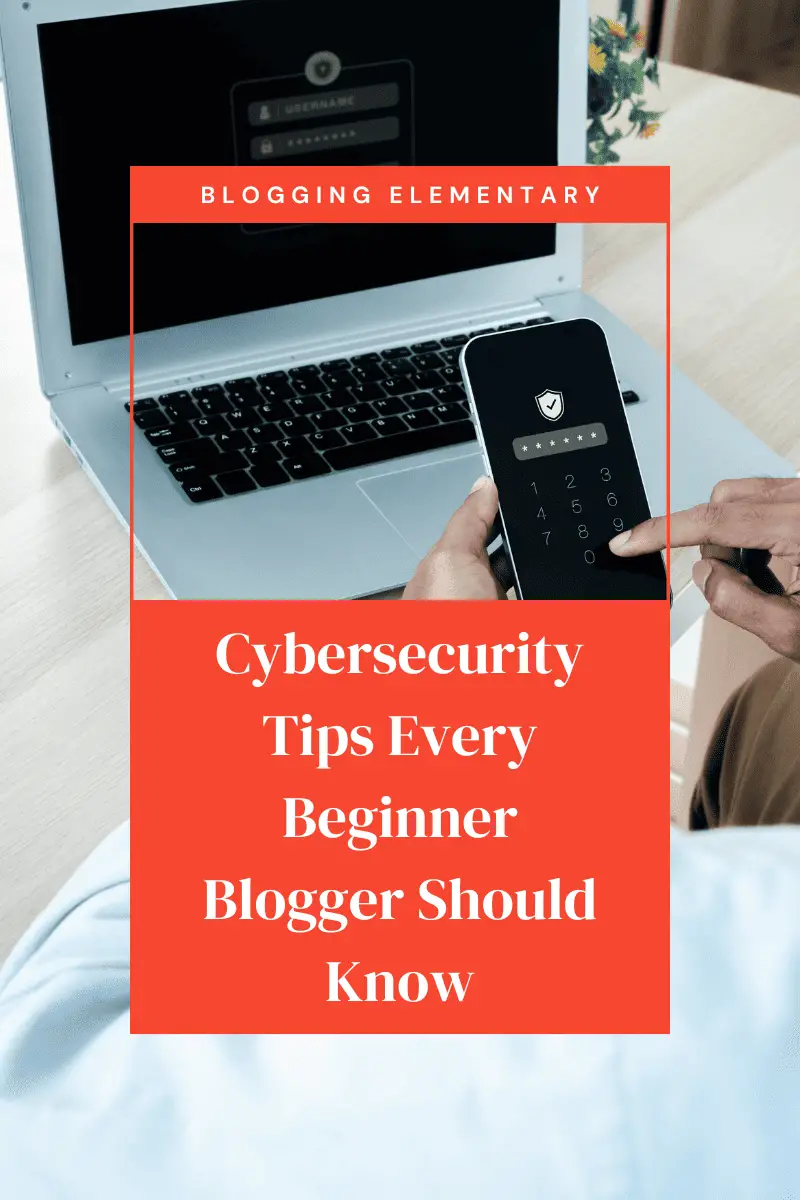In the digital era, cybersecurity is not just a concern for corporations and tech experts, but crucial for anyone with an online presence, including beginner bloggers. So, cybersecurity tips for beginner bloggers come in handy.
As you embark on your blogging journey, it’s essential to understand the risks that come with an online presence and how to protect yourself against them.

This guide will delve into the basics of digital self-defense, focusing on a common threat – spam – and how to effectively mitigate it.
By adopting these practices, you can create a safer, more secure blogging environment for yourself and your readers.
Understanding Spam And Its Risks
In the ever-evolving landscape of the internet, beginner bloggers are often excited about sharing their thoughts and connecting with readers worldwide.
However, this digital journey also brings with it the challenge of navigating through various cybersecurity threats, with spam being one of the most pervasive.
For those just starting out, understanding and implementing basic cybersecurity practices is not just beneficial, but essential for maintaining a safe and trustworthy online presence.
Spam Filtering: Your First Line Of Defense
Spam filtering stands as a crucial first line of defense in the cybersecurity arsenal of any blogger, especially for those just beginning their journey in the digital world.
This proactive measure is not only about keeping unwanted content at bay but also about safeguarding your blog’s integrity and your readers’ trust.
By understanding and implementing effective spam filtering strategies, bloggers can significantly reduce the risk of malicious content infiltrating their site.
This section delves into the key aspects of spam filtering, offering practical steps and insights to help beginner bloggers effectively manage and mitigate the risks associated with spam.
Utilize Built-in Blogging Platform Filters: Most blogging platforms come equipped with basic spam filtering capabilities. Activate these features to automatically detect and manage suspicious comments and messages.
Implement Advanced Spam Filtering Tools: For enhanced protection, consider integrating third-party spam filtering tools. These tools use sophisticated algorithms and regularly updated databases to catch spam that might slip through basic filters.
Regularly Review and Update Your Filters: Spam tactics evolve rapidly. Regularly updating your spam filters ensures they remain effective against new threats. Additionally, periodically review your spam folder to ensure legitimate comments are not mistakenly flagged.
Educate Your Readers: Inform your readers about the importance of cybersecurity and encourage them to report any spam they encounter on your blog. This collective vigilance can significantly reduce the risk of spam attacks.
Identifying And Managing Suspicious Content
Recognizing and managing suspicious content is a vital skill for any blogger.
This involves being able to distinguish between genuine interactions and potential spam.
It’s important to understand the common characteristics of spam, such as irrelevant comments, excessive links, or content that seems out of context.
Learning to identify these red flags can greatly reduce the risk of spam infiltrating your blog.
Setting up moderation for comments can be an effective way to manually review and approve content before it becomes visible to your audience, ensuring that only appropriate interactions make it onto your blog.
Creating A Secure Blogging Environment
Beyond filtering spam, creating a secure blogging environment is paramount.
This includes regular updates to your blogging platform and any associated plugins or tools, as these updates often include security enhancements.
Educating yourself about the latest cybersecurity threats and best practices is crucial.
Implementing strong password policies, enabling two-factor authentication, and being cautious about the information you share online are simple yet effective steps to enhance your blog’s security.
By creating a multi-layered defense strategy, you can significantly reduce vulnerabilities and provide a safer experience for yourself and your readers.
Enhancing Your Blog’s Security: Advanced Cybersecurity Measures
While basic spam filtering is essential, advancing your blog’s cybersecurity requires a deeper dive into more sophisticated measures.
As your blog grows, so does its attractiveness to potential cyber threats. This section outlines advanced strategies to further bolster your blog’s defense mechanisms.
Embracing these practices not only enhances security but also demonstrates a commitment to protecting your digital presence and your audience’s data.
Let’s explore key areas where you can fortify your blog against evolving cyber threats.
Regular Backups: Safeguarding Your Content
Regular backups are the safety net for your blog.
In the event of a cyber attack or data loss, having up-to-date backups can be the difference between a minor inconvenience and a catastrophic loss.
Automate the backup process to ensure that you have frequent and consistent copies of your blog.
Store these backups in multiple locations, such as cloud storage and external hard drives, to minimize risks associated with data corruption or physical damage.
Secure Connections: SSL Certificates
Implementing SSL (Secure Sockets Layer) certificates is a fundamental step in enhancing your blog’s security.
SSL certificates encrypt data transmitted between your blog and your readers, safeguarding sensitive information such as login credentials and personal data.
This not only protects your blog from interception and tampering but also boosts your credibility with your audience and search engines, as many browsers flag non-SSL sites as insecure.
Educating Yourself And Your Audience
Continuous education on cybersecurity trends and threats is essential.
Stay informed about the latest security risks and how they might affect your blog. Share this knowledge with your audience to promote a culture of security awareness.
Encourage them to adopt safe browsing practices and to be cautious about the information they share.
By educating yourself and your audience, you create a community that values and actively participates in maintaining a secure online environment.
In conclusion, embarking on a blogging journey comes with the responsibility of ensuring digital safety and security.
From basic spam filtering to advanced measures like regular backups, SSL implementation, and continuous education, each step plays a vital role in fortifying your blog against cyber threats.
As a beginner blogger, embracing these practices not only enhances the security of your online space but also builds trust with your audience.
Remember, in the digital world, being proactive about cybersecurity is not just a best practice, it’s a necessity for safeguarding your digital footprint and maintaining a positive and secure blogging experience.
